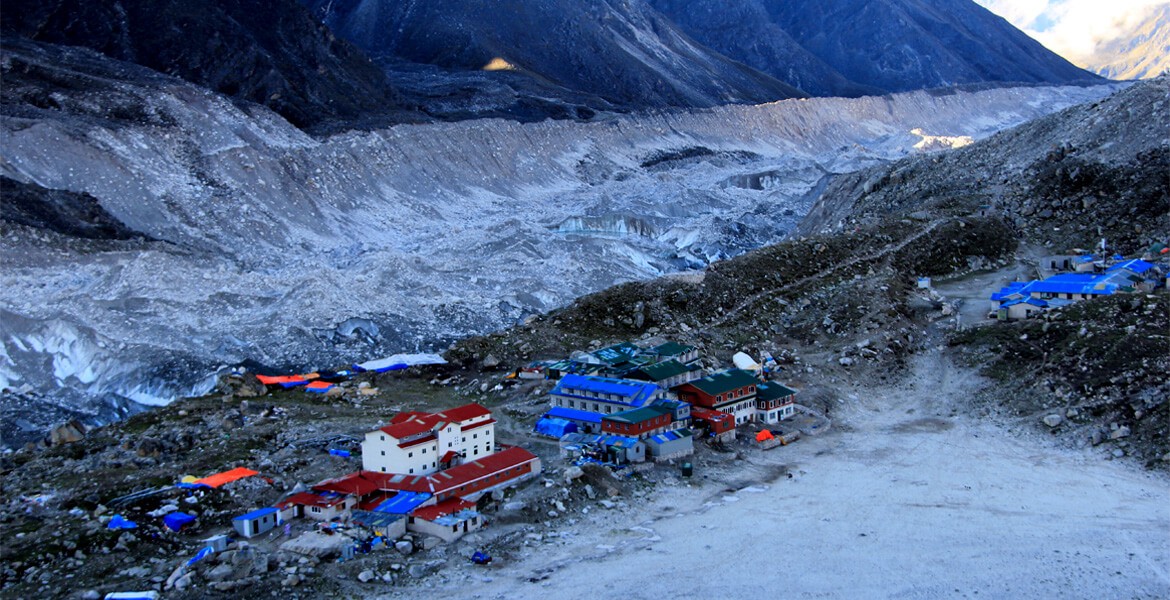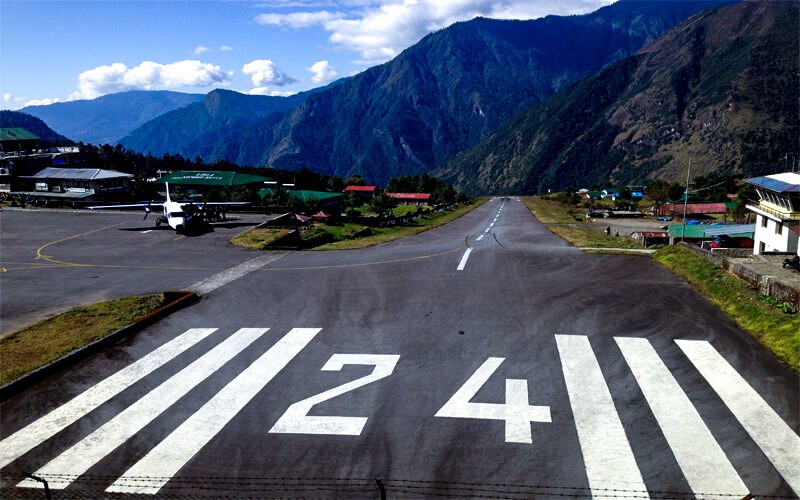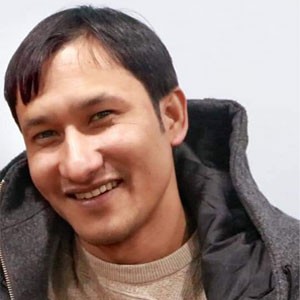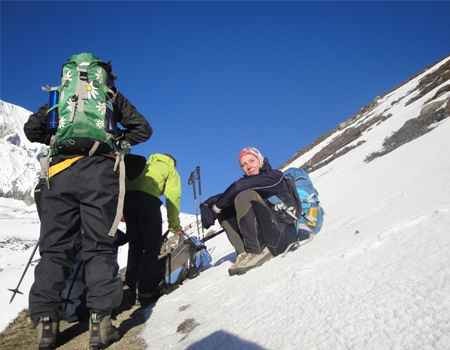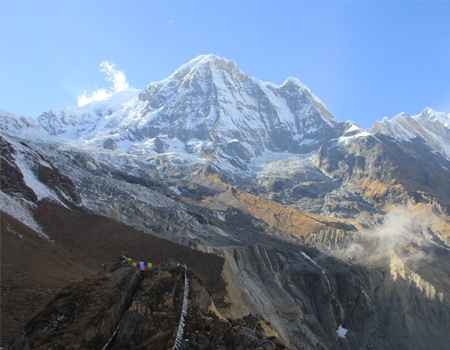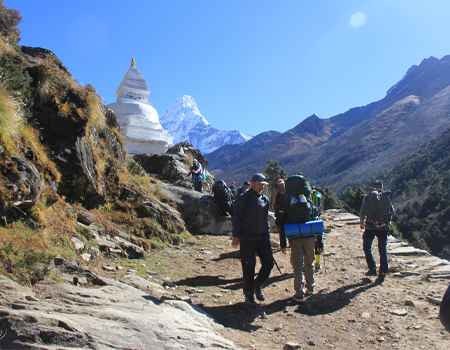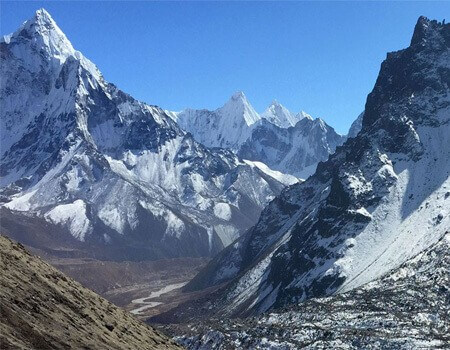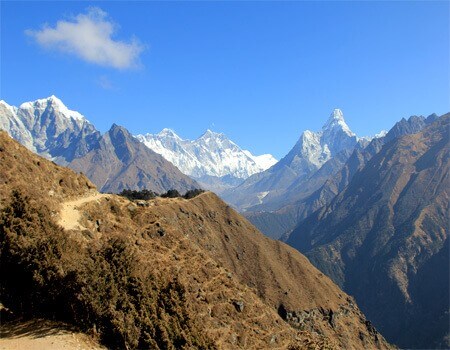Several teahouses and lodges offer comfortable stays for trekkers. Here is some information about the Accommodation you will find on your trip. The trails at Everest Base Camp vary in difficulty and terrain type, so it's natural for travelers and trekkers to get tired and weary at the end of the day.
Accommodations in Kathmandu (Days 1 & 2)
As the only international airport in Nepal is in Kathmandu, you will stay there for the first two days after arrival. Kathmandu offers a variety of Accommodations you can choose from, be it grand 5-star hotels or small and cheap run-down guest houses. The cost of a night's stay depends on where you stay.
A 3-star hotel will charge you about USD 30-50 per night. These hotels will provide standard double bedrooms with a TV and an attached bathroom. 4-star hotels that are a bit classier and have better services will charge you an average of USD 60-80. These services will also include breakfast, lunch, and dinner.
5-star hotels are a luxury in Nepal. They have swimming pools, spas, relaxation centers, and other luxury services that meet international standards. However, they are expensive, costing USD 100-400 per night.
You will also find Wi-Fi services in almost all the hotels, cable services, and Wi-Fi recharge cards.
Related Packages:
- Gokyo Lake Trek
- Renjo La Pass Trek
- Everest View Trek
Accommodations during the Trek (Day 3 to 13)
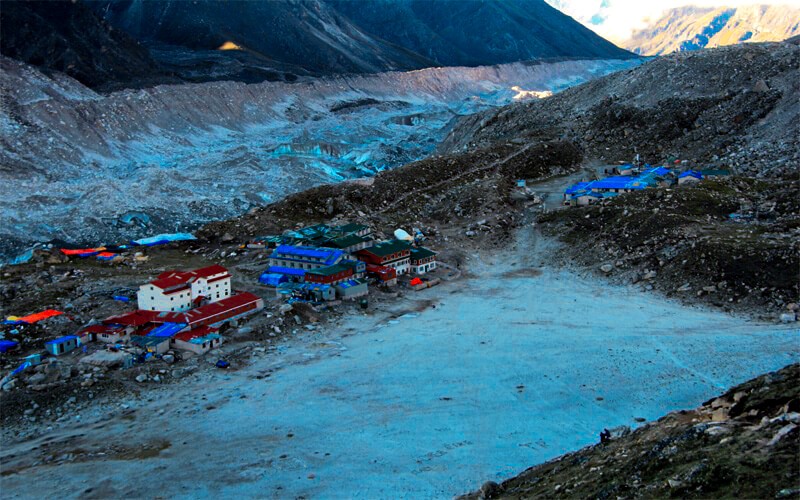
Everest base camp trek accommodation
Accommodations during the Trek will not be as facilitated as those in Kathmandu. As you travel to higher altitudes, you will find that most of the time, your Accommodation will include tea houses and lodges managed by the residents. The food will also be essential, simple local food made from locally produced products.
Accommodation in Lukla
The start of your journey is from Lukla. Since it is where the airport lies, the hotels in Lukla are more facilitated than other places during the Trek. You will find standard hotels, lodges, and tiny tea houses in this village.
You can stay at some excellent and good quality hotels in Lukla, although they might be expensive. Some even have hot water baths and standard bedding. You can also find modern food in some of the hotels in Lukla. Most accommodations provide simple food like white rice, roti (wheat pancakes), daal, curry, and other local foods, and a food menu.
Accommodation in Phakding
From the third day, the Accommodations become basic. As Phakding is considerably higher and also because there are no actual means of transport, it is harder to find standard hotels. You will spend your time in small teahouses run by the Sherpa locals. You will be given a pair of bedding and will probably get a two-bed bedroom. The toilets are mostly shared and of squat type. The food in the Accommodations is typically locally popular or the standard Nepalese meal containing Rice, Daal, and curry. Also, choosable food items from the menu are available.
There are also rarely any lodges that provide hot water service; even if they do, it is costly. If you decide to trek during the peak season, you might even have to share a room with strangers.
Accommodation in Namche
Since Namche is one of the major tourist stops in the Everest Region, it is more facilitated than most places on the Trek. On your Trek's fourth and fifth days, you can choose from many good-quality tea houses while in Namche. You will also be able to find many bakeries and cafes where you can spend your time getting ready for the rest of the trip to the top. This day is also a great destination to get used to the high altitude.
Likewise, you can also choose to spend the night at the Everest View Hotel, situated at the highest altitude in the world. It is a bit more expensive than regular lodges in that area. Apart from the Everest View Hotel, there are plenty of friendly hotels where you will get good quality service.
In addition to traditional hospitality, Namche Bazaar's accommodations offer a magnificent view of mountain ranges from your bedroom window. Waking up to the glistening snow has never been so enjoyable.
Accommodation in Tengboche
On the sixth day, after acclimatizing at Namche Bazaar, you will travel to Tengboche. It is famous for being home to the largest monastery in the Everest Region. From here, the Accommodation Will Be a bit more basic. You will be given regular bedding and simple food found in the area.
There are some cafés where you can have a drink or two. Modern food is almost impossible except for some places where you can find pizza, but it will be expensive. During peak season, you will find this place jam-packed with people. Sometimes, you will also have to share a big room with strangers.
Accommodation in Dingboche
You will spend your seventh and eighth days acclimatizing in Dingboche. During this time, your accommodations will consist of houses and lodges. They will provide essential bedding and food facilities. Typically, the accommodations are the places of residence for local people, who share them for some extra money. Your food will be selectable from local items on the menu.
Accommodation in Lobuche
You will find several basic and comfortable tea houses in Lobuche as well. Like most of the villages in the Everest Region, the tea houses and lodges are managed by local families. Similarly, the food provided is also good quality, but it will be only local food products. You will also find modern food in Lobuche. These tea houses get crowded during the peak season, so you may have to share a room with other travelers.
Accommodation in Gorakshep
Accommodation in Gorakshep is similar to other places. There are five lodges, all of which have the same services. You will have a private room but not an attached bathroom. The dining hall is warm with a fire heating by Yak dunks. However, the cause of the effects of the altitude may not be perfect sleep in this place.
Accommodation in Pheriche
This region has only a few tea houses, so it is packed with travelers, especially during peak seasons. The standard service in the teahouses is a pair of warm blankets and a pillow, and the food is similar to other places. The aesthetic of living in Accommodations and the residents is a beautiful experience. Also, as a plus point, you will be greeted in the early morning with a stunning view of the mountains in the Everest ranges up close.
Other Services in Tea House
- Many tea houses provide accessible Toilets and Shower facilities, but you might have to pay extra for a hot water shower. Showering with hot water in higher altitudes can be a bit expensive.
- You will have hot water to drink during the trip. Some places might charge you extra, but most tea houses provide this service for free.
- Many tea houses have a room with plugs for charging mobile phones. Some, however, charge USD 2-3 per hour.
- Some lodges in Lukla allow you to hire porters to carry your materials for the Trek. However, tip the guides and porters who will assist you on the Trek.
- You may buy a Wi-Fi recharge card everywhere, and use the NCELL SIM card and data if you buy it in Kathmandu.
Everest Basecamp Trek Useful Information
- The local people take their culture and traditions seriously. So, ensure you are on your best behavior and don't say or do things that might offend their culture.
- If you travel to Everest Base Camp during peak season, you will probably have to share a room with fellow travelers. Be aware of pickpockets, and always keep your belongings with you.
- It is always better to travel with a tour guide than alone as they have more experience and knowledge about the area. Having someone will be a huge help since the trails are high in the Himalayas. As such, the trekkers can even suffer from acute mountain sickness (AMS) if proper care is not provided.
- Remember always to be notified of the weather conditions. The weather can change fast in higher altitudes, and these parts also experience avalanches, so it is better to keep yourself updated constantly.
- You must take time to acclimatize and let your body get used to the temperature and the Himalayan atmosphere. If you rush yourself, you put yourself at risk for mountain sickness, which can put you at a health risk.
Everest Trek Packages:
- Everest High Passes Trek
- Everest Base Camp Trek
- Everest Base Camp Gokyo Lake combined Trek
- Everest Panorama Trek
Everest Basecamp Trek FAQs
Are there drinking water services in the accommodations?
Yes, all of the tea houses will provide you with drinking water facilities. But remember only to drink boiled water. Tea houses charge you extra money to boil water. If not, you will also find bottled mineral water in the tea houses. These will be a bit expensive, though. However, it would be best to always carry a portable water purifier in the Himalayas.
Are the accommodations safe?
Yes, local Sherpa families and residents manage most tea houses and lodges. These people are amiable, honest, hardworking, and welcoming, so you will not have to worry about safety issues.
However, there can be situations where you will have to share rooms with other travelers. In this case, you might have to watch out for your belongings. Regardless, this can also be an excellent opportunity to make new friends and explore a new culture.
Are there hot shower facilities?
Yes! Most of the tea houses will provide you with hot shower facilities. Hotels in Lukla will give you this facility for free most of the time, but as you travel to higher altitudes, you might have to pay an extra 3 to 6 USD for such a service. Also, most of the time, a hot shower facility means you will be given a bucket or two of boiling water, which you can mix with cold water for a bath.
Are the tea houses in the EBC trail open for the whole year?
Of course, the answer is yes. Most tea houses in lower and higher altitudes remain open throughout the year. However, the weather at higher altitudes is unpredictable and freezing during the winter. Only Dingboche's village was closed to traditional beliefs from July to August.
Conclusion
The thrilling adventure of viewing the highest mountain in the world is something you must experience in a lifetime. The Accommodations make it even more exciting as you will be sharing the lifestyle of the people in this region and getting a close look into their culture and traditions. The natural wonders, along with the beautiful mountain ranges, are waiting for your arrival.
